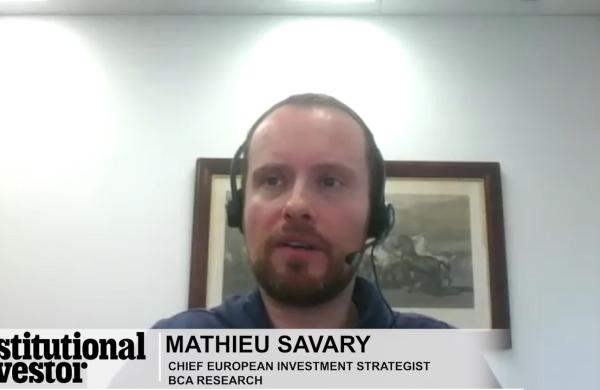The wiliest U.S. bond investors have hit the road. Global debt portfolios have significantly outperformed their U.S. counterparts, reports Morningstar, the Chicago-based research firm. Over the three years through August 2, global bond funds outperformed U.S. intermediate-term bond funds by an annualized 198 basis points; over the past five years, they have returned nearly 300 basis points more annually.
What explains the relative strength of foreign bonds? First, interest rates in other developed countries are not rising as fast as those in the U.S., which means that bond prices are not falling as rapidly. As of early August the FTSE U.S. government bond index was yielding 5.12 percent. The only developed-market sovereigns paying more were those of Australia and New Zealand. Second, many foreign currencies are appreciating against the dollar, which translates directly into gains for dollar-based investors.
Bond investors in the euro zone, Japan, the U.K. and even Canada have seen domestic negative total returns so far this year through May. But as Joseph Di Censo, global fixed-income strategist at Lehman Brothers, explains, “When you factor in the falling currency, dollar-based returns are solid, led by sterling bonds, up 7.03 percent, and euro-based bonds, which rose 6.25 percent.”
In a recent report Bill Gross, the venerable bond seer at Pacific Investment Management Co., wrote, “The process of rebalancing the current global disequilibrium most likely means that dollar-based assets should continue to underperform global alternatives.”
Of course, foreign forays present their own hazards. Morgan Stanley currency strategist Stephen Jen, for one, thinks the dollar is nearing a bottom as attractive U.S. bond yields help propel demand for the greenback.
Certainly, investors can benefit from exposure to various bond markets in different phases of their growth cycles. As Lehman’s Di Censo sees it, European and Asian markets are in earlier stages of expansion than those in the U.S., which means their rate hikes may persist well beyond the point when the Federal Reserve Board stops tightening U.S. monetary policy. “As rates go up abroad, we’ll likely see a flattening of the yield curves,” he speculates. “We suspect that prices of longer European maturities should hold up fairly well or even rise as long rates fall. In Japan investors may be safer on the short end.” Yield curve positioning, Di Censo concludes, may matter more than duration.
JP Morgan Investment Management is increasingly bullish on foreign bonds. Over the past year the firm increased its model allocation to the asset class from 2.5 percent to 7.5 percent. JP Morgan’s Julian Le Beron, who manages the $1.3 billion American Century International Bond fund, sees less-volatile interest rates, improving credit and appreciating currencies abroad as the key drivers of foreign bond outperformance. His fund generated annualized returns of 7.0 percent over the three years through August 2 and 10.52 percent over the past five years, outpacing the Morningstar global bond fund averages of 5.41 percent and 7.20 percent, respectively.
Le Beron keeps 61 percent of fund assets in Europe, 5.7 percentage points below the weighting of his JP Morgan government bond index ex-U.S. He expects the euro to strengthen on the back of rising short- and intermediate-term interest rates; thus he underweights five- to ten-year euro-zone bonds.
With 13.2 percent of his holdings in U.K. debt, Le Beron is nearly 3 percentage points overweight sterling, attracted by the country’s stable fundamentals, yields that are above the euro zone’s and prospects for currency appreciation against the dollar.
The fund manager’s 14.2 percent yen exposure virtually matches his benchmark. Unlike many who hold Japanese debt, Le Beron opts to use forward contracts. “While they involve a higher carry cost due to Japan’s very low interest rates,” Le Beron says, “forwards shield the fund from falling bond prices.”
Michael Hasenstab, co-manager of the $2.63 billion Templeton Global Bond Fund, sees structural imbalances demanding a weaker dollar even as improving credit quality strengthens many emerging bond markets.
His fund is invested in 32 countries across 19 currencies; his benchmark, the Citigroup world government bond index, is composed of just 13 countries and eight currencies (more than 87 percent of which are euro, yen and dollar). “This degree of diversification,” Hasenstab believes, “has been key in generating strong performance while managing downside risk.”
Through early August, Hasenstab’s one-year returns were 8.01 percent, three-year annualized returns breached 10 percent, and five-year returns were a hefty 12.98 percent, essentially doubling the Morningstar global bond fund averages.
Unorthodox weightings explain some of his success. The Citigroup world government bond index has 21 percent in U.S. debt; Hasenstab has none. At the same time, he’s vastly overweight Asia-Pacific, carrying a 42 percent regional exposure versus his benchmark’s 29 percent. “Being short the dollar,” he explains, “offers the best opportunities, especially against Asian currencies, which need to appreciate against the greenback.”
The fund has maintained a substantial holding in South Korean debt for several years because Hasenstab thinks the currency is undervalued given the country’s improving fundamentals. His 12.2 percent position in 2004 appreciated by nearly 26 percent, and in 2005, despite a greenback rebound, his South Korean position still managed to eke out a gain of 0.85 percent. As of the end of June 2006, his 7.9 percent position in South Korea made it the largest country holding in the portfolio.
In May 2005, Hasenstab established a 3.5 percent position in Argentinean floating-rate notes due in 2012 — his third-largest holding. At the time, these securities, which are recapitalized bank deposits backed by the country’s tax receipts, were rated B– and yielding in excess of 9 percent. Hasenstab thought the market and rating agencies had undervalued the securities because of Argentina’s earlier default on unrelated, longer-term issues. He saw ample debt service capacity and believed the impact of default on these securities would be domestically intolerable. Over the past year Standard & Poor’s has boosted its rating to B, and the notes are now yielding near 8 percent. Hasenstab’s one-year return: a handsome 8.48 percent.
David Tice, manager of the $377 million Prudent Global Income Fund, invests 71 percent of his portfolio in double-A-rated sovereigns. That includes 14 percent of total assets in Swiss treasuries and 15 percent in euro-denominated sovereigns. He also keeps nearly 8 percent of the portfolio in Canada. In addition, Tice holds about one fifth of the portfolio in ultrashort U.S. Treasuries to capture high short-term rates, minimize capital erosion from rate increases and maintain liquidity.
He mixes things up by owning gold-mining stocks. As of April 2006 part of his 13 percent exposure to gold was in Goldcorp and Agnico-Eagle Mines. When the precious metal soared past $700 an ounce this spring, he pared back his gold position to 8.7 percent.
Gold has certainly given a shine to Tice’s performance. Over the 12 months through August 2, the fund was up 11.72 percent. Three-year annualized total returns were 6.72 percent, and five-year returns were 11.37 percent.
Less prescient was Tice’s carry trade into Iceland. During the second half of 2004, he established a 3 percent position in zero-coupon AA+ sovereigns maturing in February 2007 that were yielding nearly 8 percent. With an average foreign exchange cost of 65 krónur per dollar, his investment suffered as the country’s current-account deficit and interest rates soared, and the currency’s value dropped. Tice’s holding in Icelandic bonds fell by about 5 percent through mid-July.
Loomis Sayles’ $1.13 billion Global Bond Fund, managed by Kenneth Buntrock, generated three- and five-year annualized returns of 6.76 and 10.51 percent, respectively, through August 2. His 26 percent bet on corporates is more than 10 percentage points higher than the weighting in the Lehman global aggregate bond index, his fund’s benchmark.
In his emerging-markets portfolio, Buntrock owns Brazil’s Cia Vale do Rio Doce, the world’s largest iron producer. “Supported by the lowest industry costs and the highest iron reserves, and with huge demand from China, CVRD appears poised for continued growth,” Buntrock says. He established his $5 million position in January 2004, when he judged the Brazilian real to be significantly undervalued. The company’s 30-year bonds were then trading at 98.9, rated Ba2 and yielding 8.35 percent. Though comparable Brazilian sovereigns were paying 45 basis points more, Buntrock thought CVRD was a better long-term bet than government debt. By July 2006 the CVRD bond was trading at 110.5, and its rating had jumped two notches, to Baa3. The bonds held up well during the recent market sell-off; through mid-July, Buntrock enjoyed a total return of 26.3 percent.
Bottom fishing is risky, but that’s where many experienced international bond fund investors believe the biggest gains lie. “The sell-off we saw was risk-reduction induced, not portending a decline in emerging-markets fundamentals,” Buntrock says. “It allowed us to lock into bonds at better prices and higher yields. But the sell-off does highlight the ever-present uncertainties of foreign bond investing and the need for due diligence to gain exposure to quality that can sustain its value.”






